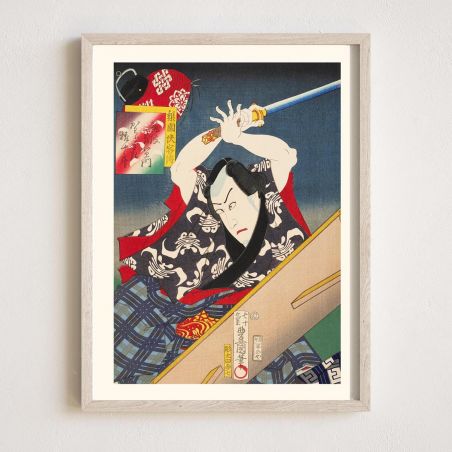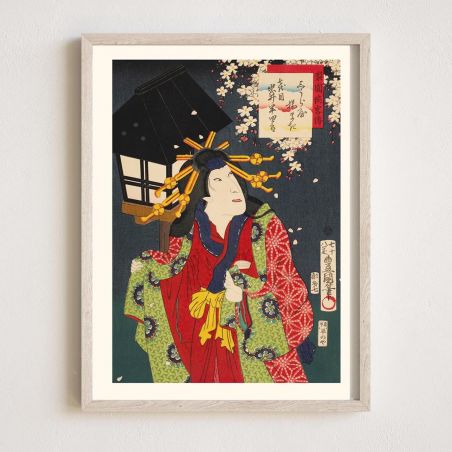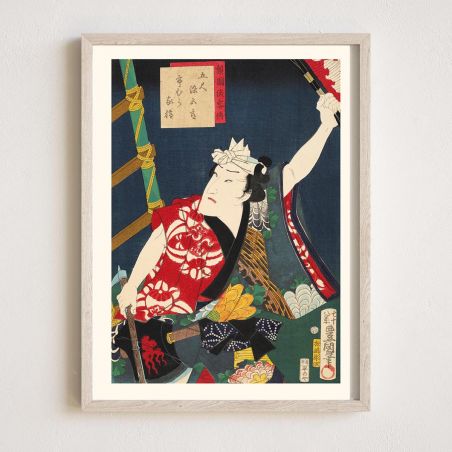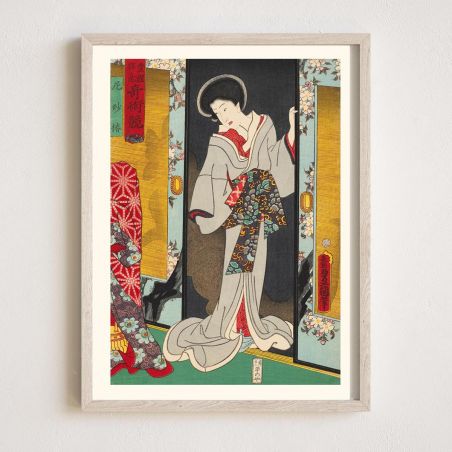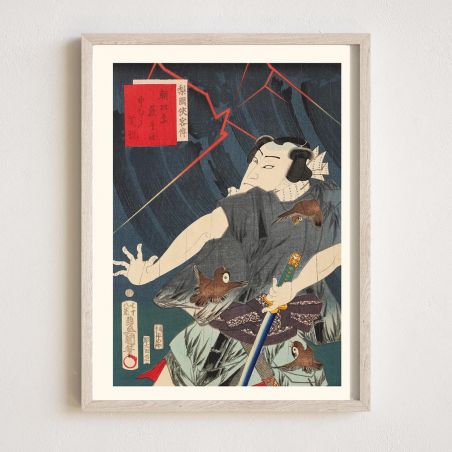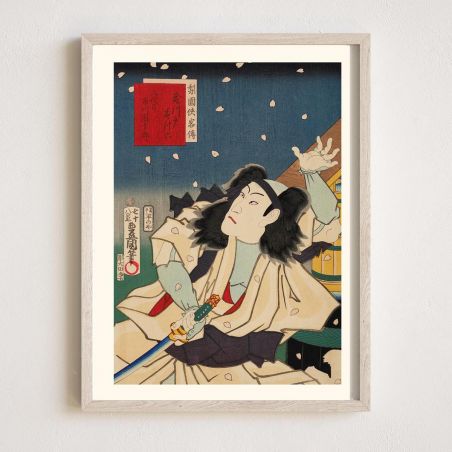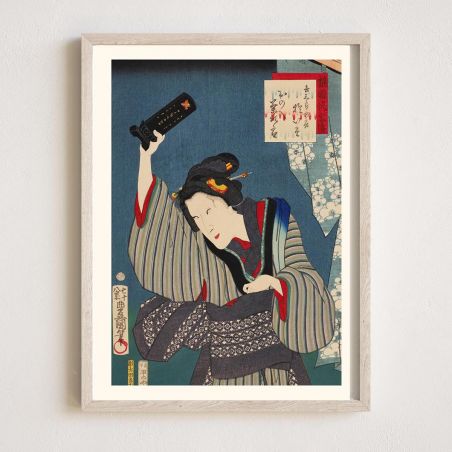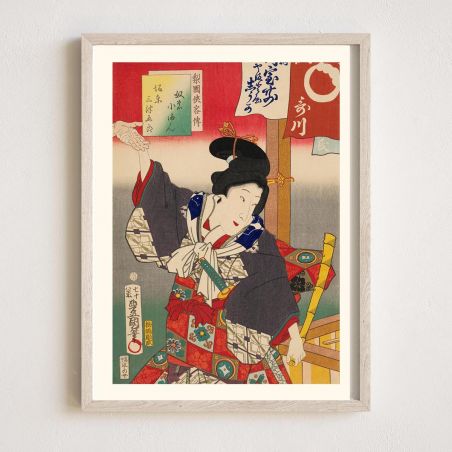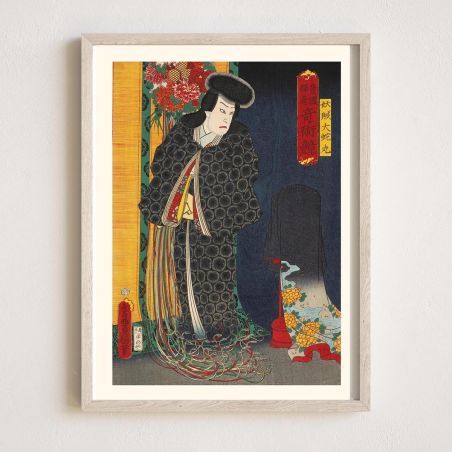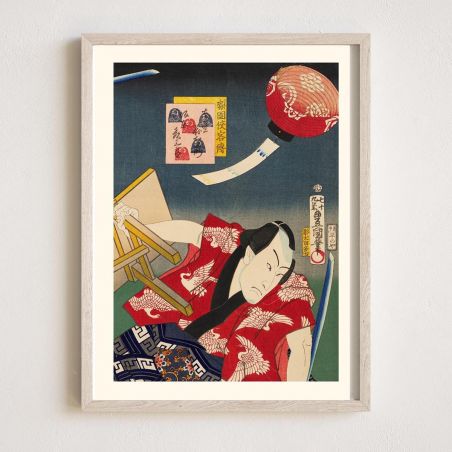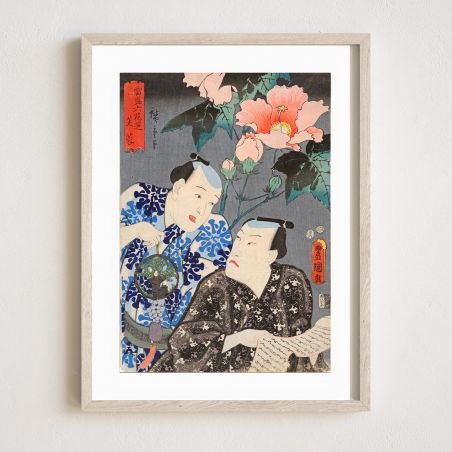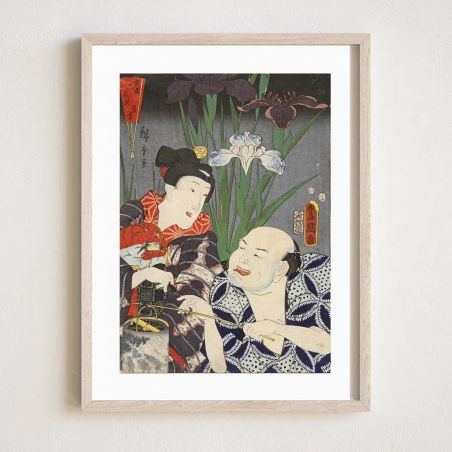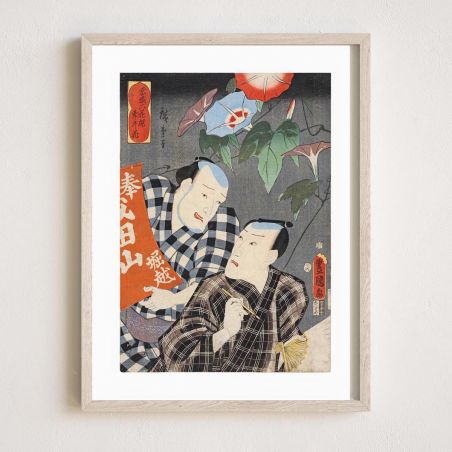Utagawa Kunisada
Utagawa Kunisada was born in Edo in 1786. His father, who died the following year, was an amateur poet of little repute. After showing a strong predilection for art (he copied the drawings of kabuki actors), he was accepted around 1800 as an apprentice by one of the greatest masters of drawing on a wooden board, Toyokuni, receiving at that time the name "gō".
He began by making prints of actors, a specialty of the Utagawa school, quickly abandoned for bijin-ga. He also painted landscapes and warriors, but although his beginnings in this field were promising, he never did much. He also produced a large number of shunga (erotic engravings), before the reforms of the Tenpō era took place in 1842.
In 1844-1845, Kunisada Utagawa changed his artist name, taking the name of his master, Toyokuni, and thus became Toyokuni III.
He sometimes collaborated with Hiroshige and Kuniyoshi on series of prints made in the 1840s and 1850s, when Japan was in the midst of a period of expansion and woodblock prints were in great demand. At this time, he was at the height of his career and dominated the market for prints of kabuki and genji actors, also making large numbers of bijin-ga and sumo-e paintings. It is estimated that he completed over 20,000 works during his lifetime.
He died after his two major contemporaries, Hiroshige and Kuniyoshi, who died in 1858 and 1861 respectively. His last years were marked by a qualitative renewal: his series were much more inspired and stood out from most of his earlier mass-produced works. He died in Edo after training several students such as Toyohara Kunichika and Utagawa Kunisada II.
There are 18 products.

.jpg)


















































































